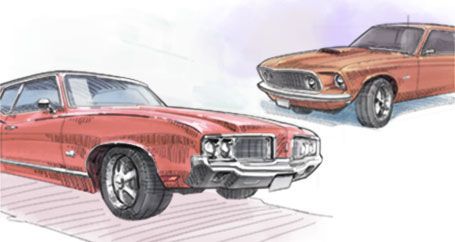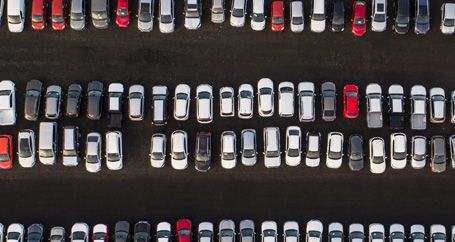Unplug cords and devices connected to your car’s USB ports or outlets. These draw a charge from the battery even when the car isn’t running.
Staying home — and off the roads — is a boon to air quality and traffic. But what does it mean for a car left idle for days or weeks because Covid-19 is keeping us inside? Automotive expert Lauren Fix, the race-car-driver-turned-media-star known as the “Car Coach,” weighs in.
There’s generally no harm in letting a vehicle sit for a few weeks. So long as there were no mechanical issues when you parked it, your car should start up and run fine when you need it again. But here are a few things to consider.
How to Keep a Car Battery Charged When Not in Use

If a car is parked during the shelter-in-place order, some drivers might think they should start a parked car regularly and let it run for a few minutes to keep the battery charged. That’s simply not necessary — if your charging system is good to begin with. I have a 1960s Mustang in my garage, and it starts right up after sitting for weeks at a time.
What you want to do is unplug the charging cords, as well as any phone, tablet or other device connected to your car’s USB ports and power outlets. These draw a charge from the battery even when the car isn’t running.
Some elaborate aftermarket audio systems — the kind with amps and subwoofers — can also deplete the battery. If you have one of these systems installed in your car, the easiest solution is to use a “trickle” charger to maintain the battery. It plugs into an electrical outlet and attaches to the battery, providing a charge only as needed. I prefer this to disconnecting the cables that attach the battery to the car, which can erase your stored settings (think: radio, seats) and require reprogramming of computer modules that control functions like air conditioning and transmission performance. In some cars, disconnecting the battery will lock [think: brick] the audio system, requiring a trip to the dealer to get an unlock code.
How to Store an Electric Vehicle

Electric vehicles need a little more diligence. After being parked two weeks, a fully charged battery pack in an electric car can lose half its charge. The car will still start, but your driving range will be cut in half. In another two weeks, the battery could be totally depleted. To be safe, an electric car should be plugged into a charger or outlet when it is parked during the shelter-in-place order. It will be ready to go when you are.
How to Prep a Gas Tank

I always make sure the gas tank is at least half full when I put a car in storage — and the same applies if your car is parked for extended periods during shelter-in-place orders. If it’s lower than that, moisture can develop inside the tank and mix with the gas. That means you’ll have water going into the engine, resulting in poor running and possible damage. Keeping enough gas in the tank also helps prevent the tank seals from drying out, which can cause fuel leakage.
Keep the gas tank at least half full to help prevent moisture from collecting in the tank and mixing with gas.
The gas you get at the pump contains ethanol, an additive that reduces carbon emissions. After about three weeks of sitting, the ethanol starts to separate from the gas itself. Running a car with “separated” ethanol can damage the fuel and emissions systems. One way to prevent this is to add fuel stabilizer to your tank when you park the car. Pick up a bottle at any auto or big-box store and follow the directions. It’s easy.
Where to Park When a Car Isn’t Being Driven

Park as far away as possible from trees, bushes, grass and other places where mice and other small animals live. They’re always looking for someplace safe and warm to hang out, like the engine compartment or your car’s interior. The wiring insulation and other parts in many newer cars are made of soy, which pests also find appetizing.
How to Prepare Tires Before Parking for a Few Weeks

It’s normal for tires to lose a few pounds of pressure when a car is parked and undriven for an extended period of time. Use a digital tire gauge to check the pressure before driving again — or once a month if the car is parked for a longer period. You can use a simple handpump to top off the air as needed. Underinflation causes premature tire wear and diminishes handling and performance.
Written by
The information contained in this page is provided for general informational purposes only. The information is provided by Farmers® and while we endeavor to keep the information up to date and correct, we make no representations or warranties of any kind, express or implied, about the completeness, accuracy, reliability, suitability or availability with respect to this article or the information, products, services or related graphics, if any, contained in this article for any purpose. The information is not meant as professional or expert advice, and any reliance you place on such information is therefore strictly at your own risk.
Related articles



